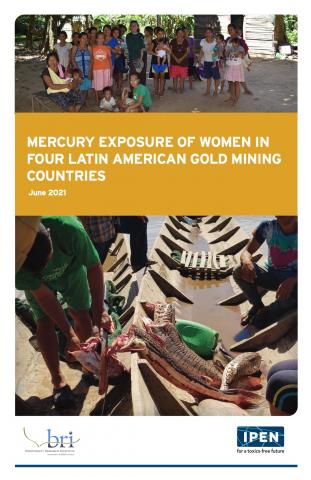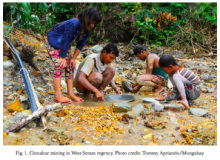
Gothenburg, Sweden Women in three Latin American countries who rely on fish for protein and live in proximity to gold mining activity have been found to have elevated mercury levels in their bodies, according to a new study, Mercury Exposure of Women in Four Latin American Gold Mining Countries. The study was conducted by the International Pollutants Elimination Network (IPEN) together with the Biodiversity Research Institute (BRI) and analyzed mercury levels in women of child-bearing age who are most sensitive to the toxic effects of mercury. Women in gold mining regions in Venezuela, Bolivia, Brazil, and Colombia volunteered to be assessed for the study. A cohort of Colombian women in a region that has switched from mercury-based gold extraction to non-mercury methods were included as a control group for comparison and were shown to have low levels of mercury in their bodies.
Hair samples were taken from women of child-bearing age in small-scale gold mining regions and analyzed for total mercury content, indicating their body burden of the highly toxic metal. Mercury is used by small-scale miners to extract gold particles from low-grade ore, and most of the mercury is lost to the environment where it contaminates fish in the local rivers.








